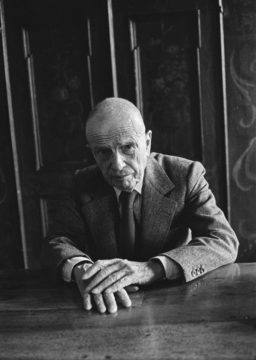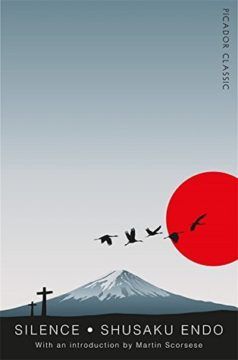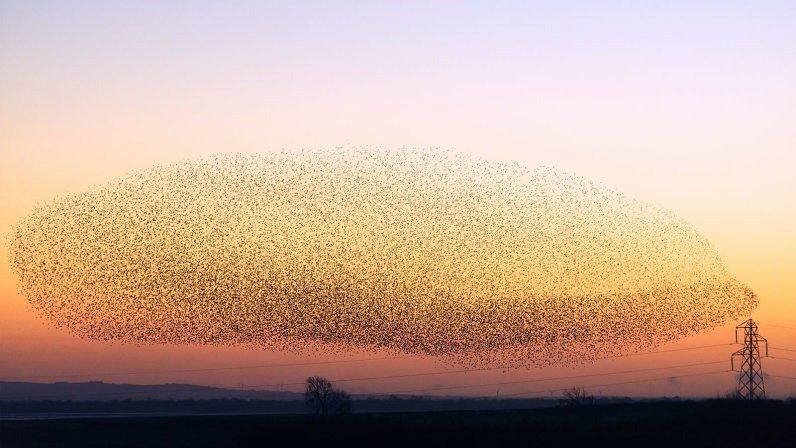Month: December 2020
Nathalie Léger’s Grapples With a Strong Maternal Pull
Leslie Jamison at Bookforum:
 Léger keeps trying to break away from her mother’s story by scrutinizing the lives of other women, but the maternal shadow—no matter how much she turns away from it—keeps edging into the frame. At their core, these books are about involuntary attention, the subjects we can’t help returning to: Léger tries to write about the Countess of Castiglione and ends up writing about her father’s mistress; she tries to write about Wanda’s divorce and ends up writing about her mother’s; she tries to write about a murdered artist and ends up confronting—finally and fully—her mother’s shame. It is as if every time she picks up a guitar to play, the sounds of a woman’s sobbing emerge from the strings instead. “Only in unfamiliar bedrooms do we perceive with such clarity the true nature of our existence—true because astray,” Léger muses, and by the beginning of The White Dress, the author seems to have accepted that she will always be haunted by backstory: “You must return to one of those unanswered questions, in a room off to the side, you switch on the light and the question is poised there, waiting.” Even when you can’t bring yourself to stare directly at the primal wound, you can’t escape it entirely—and often find yourself, as Léger describes Loden, “a woman telling her own story through that of another woman.” Léger’s own triptych does this as well—following the stories of these other women’s lives into a suite of unfamiliar bedrooms that eventually return her to the aching questions of her own childhood, poised there, waiting.
Léger keeps trying to break away from her mother’s story by scrutinizing the lives of other women, but the maternal shadow—no matter how much she turns away from it—keeps edging into the frame. At their core, these books are about involuntary attention, the subjects we can’t help returning to: Léger tries to write about the Countess of Castiglione and ends up writing about her father’s mistress; she tries to write about Wanda’s divorce and ends up writing about her mother’s; she tries to write about a murdered artist and ends up confronting—finally and fully—her mother’s shame. It is as if every time she picks up a guitar to play, the sounds of a woman’s sobbing emerge from the strings instead. “Only in unfamiliar bedrooms do we perceive with such clarity the true nature of our existence—true because astray,” Léger muses, and by the beginning of The White Dress, the author seems to have accepted that she will always be haunted by backstory: “You must return to one of those unanswered questions, in a room off to the side, you switch on the light and the question is poised there, waiting.” Even when you can’t bring yourself to stare directly at the primal wound, you can’t escape it entirely—and often find yourself, as Léger describes Loden, “a woman telling her own story through that of another woman.” Léger’s own triptych does this as well—following the stories of these other women’s lives into a suite of unfamiliar bedrooms that eventually return her to the aching questions of her own childhood, poised there, waiting.
more here.
How Michel Leiris Changed Autobiography
Sasha Frere-Jones at The New Yorker:
 When Michel Leiris died, in 1990, at the age of eighty-nine, the anthropologist Claude Lévi-Strauss wrote, in Libération, that Leiris was “indisputably one of the great writers of the century.” That would seem to be a big claim, especially if the name Leiris meant nothing to you. What was so great about him? The anthropologist Aleksandar Bošković wrote, in 2003, that “there is perhaps no single figure that influenced so strongly French ethnology and anthropology.” This is one Leiris. But, Bošković wrote, Leiris was also an “artist, poet, writer, critic, traveller, surrealist . . . a true ‘Renaissance Man’ whose friends included Breton, Bataille, Giacometti, Picasso, Césaire, and Métraux.” This gets us closer.
When Michel Leiris died, in 1990, at the age of eighty-nine, the anthropologist Claude Lévi-Strauss wrote, in Libération, that Leiris was “indisputably one of the great writers of the century.” That would seem to be a big claim, especially if the name Leiris meant nothing to you. What was so great about him? The anthropologist Aleksandar Bošković wrote, in 2003, that “there is perhaps no single figure that influenced so strongly French ethnology and anthropology.” This is one Leiris. But, Bošković wrote, Leiris was also an “artist, poet, writer, critic, traveller, surrealist . . . a true ‘Renaissance Man’ whose friends included Breton, Bataille, Giacometti, Picasso, Césaire, and Métraux.” This gets us closer.
Leiris was, before anything, a tireless witness to lived experience. The term he preferred for most of his work was not “memoir” but “autobiographical essay,” and he applied the rigor of an objective observer to his recording of the subjective. Born in 1901, he worked steadily for seven decades, but his books have yet to secure a spot with most Anglophone readers.
more here.
Beyond Tokyo and Jerusalem
Christian Gibbons in Taxis:
 In the 17th century, two Portuguese priests named Sebastião Rodrigues and Francisco Garrpe are faced with a devastating moral dilemma. For the past few weeks, they have been living among a village of Japanese peasants, not far from Nagasaki. The peasants are secretly Christians, and Christianity has been outlawed in Japan. Now an informer in the village has gotten the ear of the state, and the state has demanded hostages. The daimyo (a local feudal lord) will continue to take, cross-examine, and imprison villagers unless someone confesses to either practicing Christianity or hiding the priests. Two of the village’s most revered leaders, Mokichi and Ichizo, volunteer themselves as the first hostages, but don’t know what they should do when put before the authorities. What if they are told to apostatize, they ask, by trampling upon a fumi-e, a stone image of Jesus Christ? Rodrigues, his heart swelling with pity, shouts: “Trample! Trample!” He is immediately reproached by his companion Garrpe, but the essential conflict remains. How can these two priests stand firm in their faith when doing so endangers the very Christian souls that they purport to serve?
In the 17th century, two Portuguese priests named Sebastião Rodrigues and Francisco Garrpe are faced with a devastating moral dilemma. For the past few weeks, they have been living among a village of Japanese peasants, not far from Nagasaki. The peasants are secretly Christians, and Christianity has been outlawed in Japan. Now an informer in the village has gotten the ear of the state, and the state has demanded hostages. The daimyo (a local feudal lord) will continue to take, cross-examine, and imprison villagers unless someone confesses to either practicing Christianity or hiding the priests. Two of the village’s most revered leaders, Mokichi and Ichizo, volunteer themselves as the first hostages, but don’t know what they should do when put before the authorities. What if they are told to apostatize, they ask, by trampling upon a fumi-e, a stone image of Jesus Christ? Rodrigues, his heart swelling with pity, shouts: “Trample! Trample!” He is immediately reproached by his companion Garrpe, but the essential conflict remains. How can these two priests stand firm in their faith when doing so endangers the very Christian souls that they purport to serve?
Both men must travel a long, arduous road before either can find an answer. Shūsaku Endō’s 1966 novel Silence portrays their journey. In the process, it also depicts some of Christianity’s long and difficult history in Japan.
More here.
The coming war on the hidden algorithms that trap people in poverty
Karen Hao in MIT Technology Review:
 Credit scores have been used for decades to assess consumer creditworthiness, but their scope is far greater now that they are powered by algorithms: not only do they consider vastly more data, in both volume and type, but they increasingly affect whether you can buy a car, rent an apartment, or get a full-time job. Their comprehensive influence means that if your score is ruined, it can be nearly impossible to recover. Worse, the algorithms are owned by private companies that don’t divulge how they come to their decisions. Victims can be sent in a downward spiral that sometimes ends in homelessness or a return to their abuser.
Credit scores have been used for decades to assess consumer creditworthiness, but their scope is far greater now that they are powered by algorithms: not only do they consider vastly more data, in both volume and type, but they increasingly affect whether you can buy a car, rent an apartment, or get a full-time job. Their comprehensive influence means that if your score is ruined, it can be nearly impossible to recover. Worse, the algorithms are owned by private companies that don’t divulge how they come to their decisions. Victims can be sent in a downward spiral that sometimes ends in homelessness or a return to their abuser.
Credit-scoring algorithms are not the only ones that affect people’s economic well-being and access to basic services. Algorithms now decide which children enter foster care, which patients receive medical care, which families get access to stable housing. Those of us with means can pass our lives unaware of any of this. But for low-income individuals, the rapid growth and adoption of automated decision-making systems has created a hidden web of interlocking traps.
More here. [Thanks to D. L. Pughe.]
Freeman Dyson: Are Brains Analogue or Digital?
Robert Reich: To reverse inequality, we need to expose the myth of the ‘free market’
Robert Reich in The Guardian:
 How have a relative handful of billionaires – whose vast fortunes have soared even during the pandemic – convinced the vast majority of the public that their wealth shouldn’t be taxed in order to support the common good?
How have a relative handful of billionaires – whose vast fortunes have soared even during the pandemic – convinced the vast majority of the public that their wealth shouldn’t be taxed in order to support the common good?
They have employed one of the oldest methods used by the wealthy to maintain wealth and power – a belief system that portrays wealth and power in the hands of a few as natural and inevitable.
Centuries ago it was the so-called “divine right of kings”. King James I of England and France’s Louis XIV, among other monarchs, asserted that kings received their authority from God and were therefore not accountable to their earthly subjects. The doctrine ended with England’s Glorious Revolution of the 17th century and the American and French revolutions of the 18th.
Its modern equivalent might be termed “market fundamentalism”, a creed that has been promoted by today’s super rich with no less zeal than the old aristocracy advanced divine right. It holds that what you’re paid is simply a measure of what you’re worth in the market.
More here.
Aldo Tambellini’s BLACK IS (1965)
The Secret History of T. S. Eliot’s Muse
Michelle Taylor at The New Yorker:
 Most readers know Eliot as the arch-impersonal poet, who bewildered the world with “The Waste Land” and proclaimed that “poetry is not a turning loose of emotion, but an escape from emotion.” Readers of this Eliot might, at first, have difficulty recognizing the gushy, hyperbolic admirer who signed his letters to Hale as “Tom.” In many of the letters, he described Hale as a kind of divinity, or at least nobility: “my Dove,” “my paragon”; his “one Fixed Point in this world.” Yet Eliot’s grandiloquent devotion can also sound like a kind of escape from certain messy feelings—the turmoil of his marriage, his uncertainty about his career—into something closer to what he sometimes called an “art emotion,” an impersonal, transcendent feeling. In his famous 1919 essay, “Tradition and the Individual Talent,” Eliot wrote, “The progress of an artist is a continual self-sacrifice, a continual extinction of personality.” In 1936, when Hale had at last returned his affection, Eliot marvelled to find himself engaged in a “perpetual daily surrender” to Hale, “and yet at the same time . . . to something bigger than either ‘me’ or ‘you’ – to something that only you and I together can look at.” Something, perhaps, like a poem.
Most readers know Eliot as the arch-impersonal poet, who bewildered the world with “The Waste Land” and proclaimed that “poetry is not a turning loose of emotion, but an escape from emotion.” Readers of this Eliot might, at first, have difficulty recognizing the gushy, hyperbolic admirer who signed his letters to Hale as “Tom.” In many of the letters, he described Hale as a kind of divinity, or at least nobility: “my Dove,” “my paragon”; his “one Fixed Point in this world.” Yet Eliot’s grandiloquent devotion can also sound like a kind of escape from certain messy feelings—the turmoil of his marriage, his uncertainty about his career—into something closer to what he sometimes called an “art emotion,” an impersonal, transcendent feeling. In his famous 1919 essay, “Tradition and the Individual Talent,” Eliot wrote, “The progress of an artist is a continual self-sacrifice, a continual extinction of personality.” In 1936, when Hale had at last returned his affection, Eliot marvelled to find himself engaged in a “perpetual daily surrender” to Hale, “and yet at the same time . . . to something bigger than either ‘me’ or ‘you’ – to something that only you and I together can look at.” Something, perhaps, like a poem.
more here.
Remembering Chuck Yeager, a Pilot with the Right Stuff
Bob van der Linden in Smithsonian:
 The greatest pilot of the greatest generation has passed. Seventy-nine years to the day after the attack on Pearl Harbor, famed test pilot, World War II ace, and the first person to fly faster than the speed of sound, Brig. Gen. Charles “Chuck” Yeager, died at the age of 97.
The greatest pilot of the greatest generation has passed. Seventy-nine years to the day after the attack on Pearl Harbor, famed test pilot, World War II ace, and the first person to fly faster than the speed of sound, Brig. Gen. Charles “Chuck” Yeager, died at the age of 97.
On October 14, 1947, Yeager forever shattered the myth of the so-called “sound barrier” when he piloted his Bell X-1 Glamorous Glennis to 700 miles per hour (Mach 1.06) 43,000 feet above the southern California desert. The X-1 program contributed greatly to the understanding of the challenges of transonic and supersonic flight. Of great significance to the security and prosperity of the country, these lessons were directly applied to the next generation of military and commercial aircraft, keeping America in the forefront of aeronautical research.
More here.
What We Know of Sappho
Judith Schalansky at The Paris Review:

There are not many surviving literary works older than the songs of Sappho: the down-to-earth Epic of Gilgamesh, the first ethereal hymns of the Rigveda, the inexhaustible epic poems of Homer and the many-stranded myths of Hesiod, in which it is written that the Muses know everything. “They know all that has been, is, and will be.” Their father is Zeus, their mother Mnemosyne, a titaness, the goddess of memory.
We know nothing. Not much, at any rate. Not even whether Homer really existed, or the identity of that author whom we for the sake of convenience have dubbed “Pseudo-Longinus,” who quotes Sappho’s verses on the power of Eros in the surviving fragments of his work on the sublime, thereby preserving her lines for future generations, namely us.
more here.
Take a Break From the Doom and Look at These Rad Starlings
Jody Serrano in Gizmodo:

Although your first instinct when you see these photos might be, “Oh god,” we promise that it’s not an upcoming extreme weather event or some alien species coming to invade Earth. (Given that it’s 2020, you’re forgiven for thinking anything that’s not obviously good is probably horrific.) In fact, these are actually photos taken this week of a starling murmuration in Scotland.
More here.
Wednesday Poem
Flee fro the pres, and duelle with sothfastnesse;
Suffyce unto thy good, though hit be small…
…………. Chaucer, ‘Balade de bon conseyl’
A Standing Ground
However just and anxious I have been
I will stop and step back
from the crowd of those who may agree
with what I say, and be apart.
There is no earthly promise of life or peace
but where the roots branch and weave
their patient silent passages in the dark;
uprooted, I have been furious without an aim.
I am not bound for any public place,
but for ground of my own
where I have planted vines and orchard trees,
and in the heat of the day climbed up
into the healing shadow of the woods.
Better than any argument is to rise at dawn
and pick dew-wet berries in a cup.
by Wendell Berry
from Farming a Handbook
What Are the Humanities? Why Are They Worth Saving?
Justin E. H. Smith in his Substack Newsletter:
 This much is all true: I believe that “quality television” is in fact of extremely low quality, that “YA literature” is not literature, that “OA literature” as it were looks more and more like YA with each passing year, that superhero movies are of course not cinema and that no self-respecting adult should ever watch them, except perhaps as an expression of love to some li’l tyke in their lives. If we were living in a culture dominated by grown-ups, Martin Scorsese would be considered the purveyor of middle-brow forgettable fare rather than the gold standard of sophistication, and at least the childless among us would not even have to be aware of Spider-Man’s existence.
This much is all true: I believe that “quality television” is in fact of extremely low quality, that “YA literature” is not literature, that “OA literature” as it were looks more and more like YA with each passing year, that superhero movies are of course not cinema and that no self-respecting adult should ever watch them, except perhaps as an expression of love to some li’l tyke in their lives. If we were living in a culture dominated by grown-ups, Martin Scorsese would be considered the purveyor of middle-brow forgettable fare rather than the gold standard of sophistication, and at least the childless among us would not even have to be aware of Spider-Man’s existence.
Somehow these commitments make me a crypto-reactionary for a whole generation of thirty-somethings with Ph.D.s and with anime avatars on their social-media accounts, even though my principal frame of analysis whenever I discuss these cultural phenomena remains Marxist through and through: they are opium for the masses, churned out by rapacious mega-corporations that do not care about society or about art. Yet in the current climate, for reasons I will never understand, to share 10% of one’s views with the political right is to invite constant entreaties and attempted seductions from the right, while to share 90% of one’s views with the left is to invite categorical ostracism from the left for not being able to get on board for that remaining 10% — even when that remaining 10% concerns “superstructural” questions of art and sensibility, and has nothing to do with fundamental questions of economic justice.
I was brutally reminded of all of this when, last week, the Chronicle of Higher Education picked up and ran a version of my most recent public ‘stack concerning, among other things, the near-total collapse of the academic humanities over the past few decades.
More here.
To Tell or Not to Tell
Greg Gerke in the Los Angeles Review of Books:

I only realized I’d been looking for something over some years when I finally found it in an obscure archived page of The Washington Post from February 1985. Hugh Kenner’s review of Gilbert Sorrentino’s essay book Something Said. The two lines are tucked away in the middle:
Page after page and instance after instance, Sorrentino wrestles with the same radical misunderstanding: that fiction and poetry are valuable for what they “tell” us. To rebut that without seeming to exalt empty “style” can be the hardest expository labor in the world.
I must have needed an answer I could fit into a tweet and then brazenly not tweet, owing to a pre-internet-birthed monkish streak. Still, the answer had to be small to be sustained (and certainly pithy) and Kenner provided it — an answer to what has gone awry in literature locally and in most other English-speaking countries — films, too.
More here.
A conversation with Noam Chomsky on the future of democracy, nuclear threat and the looming environmental catastrophe
Sean Carroll’s Mindscape Podcast: David Stasavage on the Origin and History of Democracy
Sean Carroll in Preposterous Universe:
 Those of us living in democracies tend to take the idea for granted. We forget what an audacious, radical idea it is to put government power into the hands of literally all of the citizens of a country. Where did such an idea come from, and where is it going? Political scientist David Stasavage has written an ambitious history of democracy worldwide, in which he makes a number of unconventional points. The roots of democracy go much further back than we often think; the idea wasn’t invented in Athens, but can be found in a large number of ancient societies. And the resurgence of democracy in Europe wasn’t because that continent was especially advanced, but precisely the opposite. These insights have implications for what the future of democracy has in store.
Those of us living in democracies tend to take the idea for granted. We forget what an audacious, radical idea it is to put government power into the hands of literally all of the citizens of a country. Where did such an idea come from, and where is it going? Political scientist David Stasavage has written an ambitious history of democracy worldwide, in which he makes a number of unconventional points. The roots of democracy go much further back than we often think; the idea wasn’t invented in Athens, but can be found in a large number of ancient societies. And the resurgence of democracy in Europe wasn’t because that continent was especially advanced, but precisely the opposite. These insights have implications for what the future of democracy has in store.
More here.
The Stay At Home Museum: Bruegel
App: Ovia Pregnancy Tracker
Kea Krause at The Believer:
![]() At twenty-seven weeks, my baby was a sweet potato—and also a croissant, a slingshot, and a sugar glider. At thirty-one weeks, she was a head of romaine lettuce, a croquembouche, a foam finger, and a small-clawed otter. There were inconsistencies. At twenty-four weeks, she was the size of an Atlantic puffin but also a GI Joe, which I’d thought was very small. The bakery item that week was a demi-baguette, which further complicated things, as a baguette is long and skinny, unlike a rotund Arctic bird. Later, I realized I had confused the GI Joe with a toy soldier. (I myself had been a Teenage Mutant Ninja Turtles girl in childhood.) Some weeks I tried to average out the animal, vegetable, toy, and bread and come up with my own Jabberwocky: a puffin with baguette legs and a GI Joe head.
At twenty-seven weeks, my baby was a sweet potato—and also a croissant, a slingshot, and a sugar glider. At thirty-one weeks, she was a head of romaine lettuce, a croquembouche, a foam finger, and a small-clawed otter. There were inconsistencies. At twenty-four weeks, she was the size of an Atlantic puffin but also a GI Joe, which I’d thought was very small. The bakery item that week was a demi-baguette, which further complicated things, as a baguette is long and skinny, unlike a rotund Arctic bird. Later, I realized I had confused the GI Joe with a toy soldier. (I myself had been a Teenage Mutant Ninja Turtles girl in childhood.) Some weeks I tried to average out the animal, vegetable, toy, and bread and come up with my own Jabberwocky: a puffin with baguette legs and a GI Joe head.
more here.
Bruegel as Cinema
Jackson Arn at Art in America:
 BRUEGEL SEEMS LIKE A BETTER FIT for a certain type of film than for poetry. His indiscriminate eye; his contempt for obvious “takeaways”; his wide, lucid images withholding judgment—in all these ways, he anticipates the “slow cinema” of the last few decades. It seems appropriate that director Andrei Tarkovsky, a pivotal figure in the flourishing of this kind of cinema, should be the first major filmmaker to put Hunters to work onscreen.
BRUEGEL SEEMS LIKE A BETTER FIT for a certain type of film than for poetry. His indiscriminate eye; his contempt for obvious “takeaways”; his wide, lucid images withholding judgment—in all these ways, he anticipates the “slow cinema” of the last few decades. It seems appropriate that director Andrei Tarkovsky, a pivotal figure in the flourishing of this kind of cinema, should be the first major filmmaker to put Hunters to work onscreen.
Tarkovsky left behind two unmistakable Hunters homages, one a long, aching look at the image and the other a bizarre, fractured tableau vivant. Even if he’d shot neither, people would compare his work to Bruegel’s. Andrei Rublev (1966) opens with one of the most Bruegel-esque scenes ever filmed: medieval peasants build a hot air balloon, launch it with one of their number tied beneath, and hoot with delight as he floats off over the countryside before crashing Icarus-like to earth. The scene ends with a zoom shot of the ground—Tarkovsky, like Bruegel, is always looking down at his figures, so that they don’t seem to reach up to the heavens so much as sink into the mud.
more here.
